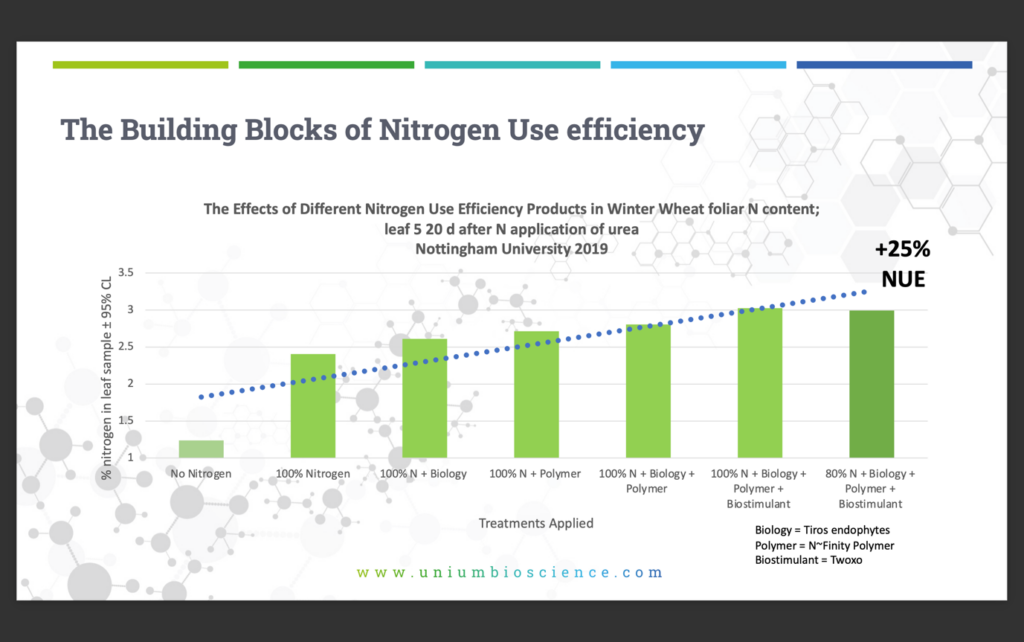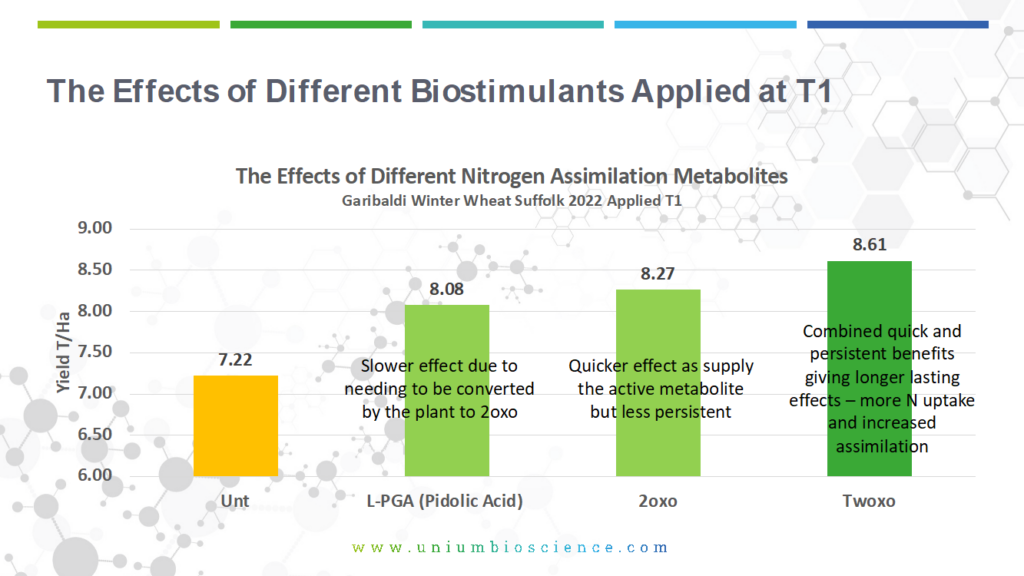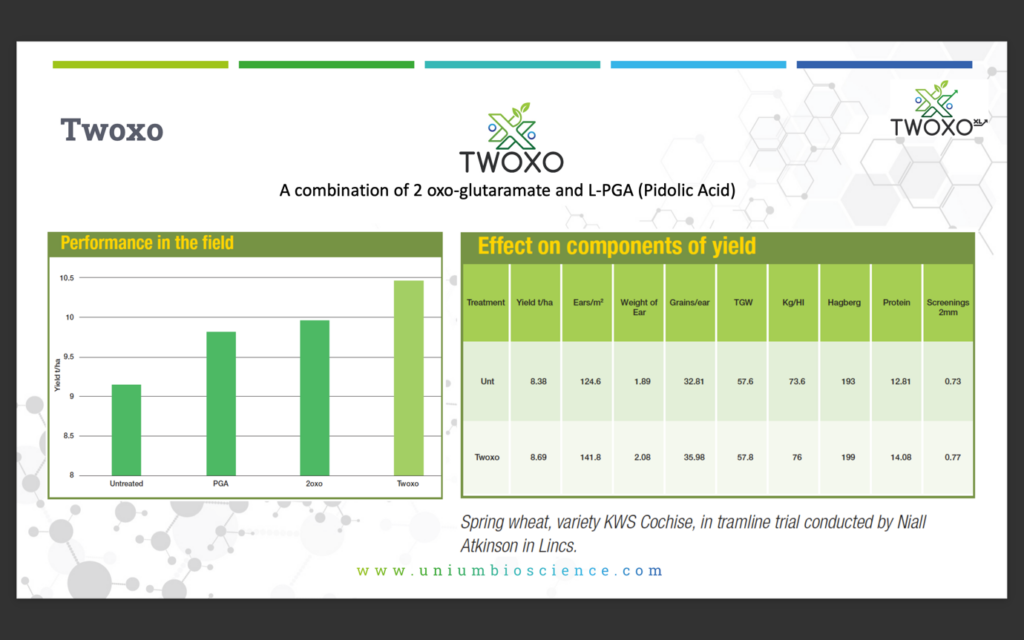Biologicals offer a cost-effective solution to reducing nitrogen applications
17th May 2023
Biologicals offer a cost-effective solution to plant health and fertiliser challenges by increasing nitrogen use efficiency in crops, helping farmers reduce input costs and combat environmental challenges, according to UK biotechnology company Unium Bioscience.

Field trials of Twoxo in wheat.
Cambridgeshire-based arable farmer, Russ McKenzie, confirmed he has seen a .3 – .35 t/ha yield improvement on his winter wheat using Unium Biosciences’ Twoxo signalling compound.
“It may seem like a modest yield improvement, but we have trials to prove it and Twoxo gives a good bang for its buck,” he said. “We use it growth stage 32 to boost N uptake in the wheat at a key time. It’s a no brainer product to build the foundations of a good yield.”
Mr McKenzie runs a 140ha arable farm near Huntingdon on which he operates a no-till system, and believes biologicals have helped reduce N applications on the farm by getting the plant to work for itself.
“We’ve reduced N from the standard 200kg/ha to 180kg/ha and biologicals have helped us to trim it back,” he added.
Mr McKenzie is currently using Twoxo on winter wheat that has good rooting and said the crop is looking healthy. For crops that are struggling, he suggested considering a different product, but if there is good rooting, Twoxo can help increase N use efficiency (NUE) and enhance carbon sequestration.
John Haywood from Unium Bioscience, who has been working with Russ to trial a number of different products, said Twoxo can be used between growth stages 30 and 37, with the optimum timing being at stages 31 and 32.
“There are two enzymes that play an important role in nitrogen metabolization, glutamine synthetase (70% in cereal crops) and asparagine synthetase (30% in cereal crops).
“Twoxo works 100% on the glutamine pathway and what scientists proved with over 30 years of research was the link between carbon and nitrogen metabolism in this pathway,” he explained.
“The product has two modes of action, the first is when the plant photosynthesises and fixes carbon, the TWOXO signals to the plant to upregulate the N uptake to bond to the carbon. It can also upregulate photosynthesis to bond carbon to N,” he added.
“The carbon helps to keep the balance in the assimilation. We know that excess use of N causes lush floppy growth, making cells extend rather than divide, and carbon is central to optimising N use in the plant. Also, if excess N is exuded off the leaf it encourages pathogens and bugs,” Mr Haywood said.
Wheat trials point to product efficiency
Independent winter wheat trials conducted Nottingham University have shown a 25% increase in NUE in plants treated with Twoxo in conjunction with the endophyte Tiros and a polymer.
Meanwhile, the results of 2021 field trials in Essex showed Twoxo was the highest-performing biostimulant at T1 stage, resulting in a yield of 8.61t/ha – a 19% yield increase on the control.
Further field trials in Lincolnshire run by Niall Atkinson on KWS Cochise spring wheat showed a 4% yield increase and higher performance on all yield components when Twoxo was used, including 14.08% protein compared with 12.81% in the control.
“The 2-Oxoglutaramate (TWOXO) assimilates N and builds it into amino acids, and then when it’s assimilated in the biomass, in the next flag leaf, you must convert it to yield and that’s when you apply T6P,” Mr Haywood said.
He added the key is knowing what farmers want to achieve in a particular crop and understanding the biostimulant must be used as part of a programme, in which T6P helps to get the nutrition balance right and regulate carbohydrate levels.



